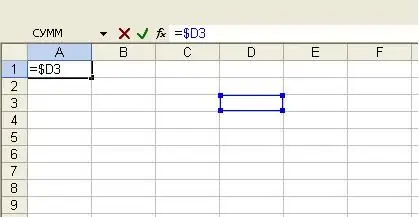The Microsoft Excel spreadsheet uses references as its cell addresses. Links are usually specified in functions to specify the location of the table data. There are two types of links presentation: classic and R1C1 links. The classic style is set by the designation of the column and row of the location of the desired cell. Links can be absolute or relative to indicate the nature of the offset they specify. References like R1C1 also set the offset to the specified number of rows and columns. Linking in Excel is based on offset requirements.

It is necessary
Microsoft Excel application
Instructions
Step 1
Start Microsoft Excel. Create a new or open an existing spreadsheet file. By default, Excel uses classic A1 references, where an alphabetic character stands for a column, and a numeric character stands for a row. The desired cell is located at the intersection of the specified column and row.
Step 2
Select the cell in which you need to link to another cell in this sheet. In the bottom toolbar, find the function field f (x). Place the current cursor in this field with the mouse and enter the "=" sign in it.
Step 3
Write a reference to a cell with data in the function you are creating. To do this, indicate the letter designation of the column and the row number at the intersection of which the specified cell is located. You will get a relative link. When you copy or move the created link to another cell, the relative link will change its value.
Step 4
Provide an absolute link if necessary. To do this, add the "$" sign in front of the column and row designation of the link created. Thus, the relative link D3 will turn into an absolute one - $ D $ 3. Now, whenever this record is moved from one cell to another, the expression will always point to the cell at the intersection of column D and row 3.

Step 5
To work with links like R1C1, enable the corresponding option in the Excel settings. To do this, select the "Service" - "Options" items in the main menu of the program. The settings window will appear, in which open the "General" tab. Check the box next to R1C1 Link Style and click OK.

Step 6
All links you enter are converted to R1C1. Moreover, relative links will be presented as: R [1] C [1]. The number after the R stands for the line offset, and the number after the C for the columns. So the reference to cell D3 will now have the record: R [2] C [4]. An absolute reference of the form R1C1 sets the offset of the required cell relative to the beginning of the sheet, and a relative reference R [1] C [1] - relative to the cell with the function.






